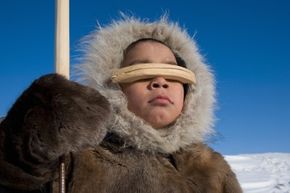Here's the thing: Humans are pretty uniform. We're not only all mammals, but we're the exact same type of mammals. Sure, there are short humans and tall humans and humans with lighter skin and humans with more body hair and humans who love dressing up as characters in campy comedy classics and humans who prefer to watch BBC dramas at home. But when it comes to biological differences? Well, our bodies pretty much function in extremely similar ways.
In other words, there is no race of people who have been selectively bred to survive conditions that others could not — although we must remember that many, many cultural groups make all sorts of adaptations to account for climate in their area. With that being said, it's really important to keep in mind that humans are pretty darn good at acclimatizing. That means that almost right away, people introduced to the cold are going to have their blood vessels narrow, which will preserve body heat [source: O'Neil].
Advertisement
As time goes on, your body will do a couple of things to stay warm for a longer term. It will increase its basal metabolic rate, which will produce more heat. Fat might begin to develop around vital organs for insulation. And most importantly, you'd probably find social ways to adapt to the cold: finding warmer clothing, sleeping close to other warm bodies and eating fattier foods to step up heat production. In other words, lots of human bodies can adapt to weather conditions. But we can't say that Inuits, for example, are more likely to tolerate the cold; they've just adapted to it.
To understand this a bit more, let's study the broadest two groups of humans we can find: men and women. There have been many studies trying to gauge whether women and men tolerate heat or cold differently. One study said that the old adage "cold hands, warm heart" might be true for women: Females averaged high core temperatures yet colder hands, so they might have felt colder yet still conserved more heat [source: Kim]. But another study found that if women and men are of equal size and body fat, they're going to tolerate and regulate temperature very similarly [source: Tikuisis].
So does our race, ethnicity or gender affect our weather tolerance? We can't quite say no, because our perception of heat or cold counts. Many of us have preconceived notions of why we like hot, cold, snowy, sunny or rainy weather that aren't entirely based on our bodily reactions. Two people could both be standing in 40-degree weather, for example, and have very different tolerances to it — while all the while their bodies are reacting quite similarly.
Advertisement

